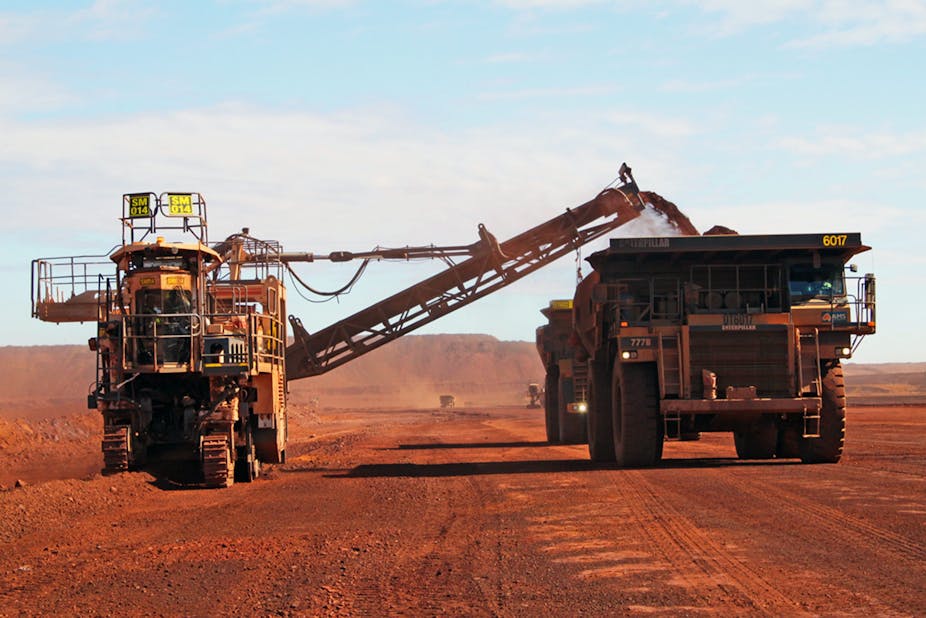The Commonwealth government’s mining tax, the minerals resource rent tax (MRRT), has been a continuing source of controversy. It is easy to point to its significant problems, but a considerable challenge to plot a worthwhile reform agenda.
Corporations in the mining industry, as do corporations in other parts of the economy, pay corporate income tax at a rate of 30% on the return to the equity invested and any economic rents earned on the natural resource deposits. Shareholders may pay additional personal income tax on dividends and capital gains. In addition, most on-shore mining businesses pay a state government-imposed royalty as a charge for state government-owned non-renewable minerals and energy deposits. Most royalties are assessed as a percentage of the estimated value of production. The royalty rate varies from zero for gold mines through to 12.5% for some coal mines, with an average rate of about 8%.
Introduced in July 2012, the MRRT is effectively an additional special tax on iron ore and coal mining levied by the Commonwealth government. In principle, the MRRT is levied on the economic rent to the natural resource deposit, measured as receipts less production expenses for labour, machinery and materials, and the royalty. The MRRT negotiated with the three large mining companies provided a generous interpretation of expenses for machinery, buildings and other capital by allowing depreciation based on the market value of these assets, as opposed to their historical cost. To a considerable extent, the market value included the capitalised value of the economic rent earned on the natural resource deposit. The effective MRRT rate is 22.5%.
Rather than government paying out in the case of a measured MRRT tax loss, losses are carried forward at the long-term interest rate plus 7%. This loss carry-forward provision represents a tax concession for mines working well-endowed natural deposits and low risks, and a tax impost for the marginal less well-endowed deposits with a high risk of failure.
As proposed in 2010 in the Henry Review, Australia’s Future Tax System, radical reform of special taxation of the mining industry would involve replacing the distorting royalty system with a tax on the economic rent earned on the natural mineral resource initially owned by the states. The well-endowed mines with properties of small over burdens, extensive rich mineable reserves, and close to available transport infrastructure have relatively low production costs, and would pay a relatively large economic rent tax, and more in times of boom commodity prices. By contrast, the less well-endowed mines with properties of large over burdens, limited mineable reserves containing impurities, and requiring large investments in transport infrastructure have relatively high production costs, and would pay a much lower (or even zero) economic rent tax. An economic tax for royalty swap could result in a larger and more efficient industry, and increased government revenue.
Replacing the current royalty system levied by the states with an economic rent tax, and applying it to all minerals and energy at a common rate, will require the involvement of the states and Commonwealth governments, and a substantially revised set of Commonwealth-state financial arrangements. Problems of the MRRT involving continued operation of the royalties, and with states increasing royalty rates at the expense of Commonwealth MRRT revenue, illustrate the costs of unilateral action by the commonwealth.
Another set of challenges to the reform of special taxation of the economic rents earned by the well-endowed deposits concerns measurement of the economic rent. The resource rent tax model which underlies the PRRT and MRRT taxes is just one of several options. The cash-flow model, or Brown tax, provides the benchmark in terms of efficiency and simplicity. However, for most mines, because of the lag between investment and mining receipts, governments would be writing cheques to miners, and to date they have avoided this prospect. The resource rent tax seeks to overcome government writing cheques to companies by having losses carried forward, and indexing the losses for the borrowing cost to the miner. Inevitably, the chosen indexation rate is arbitrary, and its uniform rate is inconsistent with the heterogeneity found with natural resource deposits with different natural endowments and with different businesses. Another option is to auction licences to mine, with the more favoured mines expected to earn larger economic rents attracting higher bids.
The reality is that many mines already are in operation, and investment decisions were based on the existing special taxation arrangements. The choice of transition rules for existing mines is a contentious reform design issue. Arguably, the MRRT, with its “exploration allowance” to lower the effective tax rate from 30 per cent to 22.5 per cent, together with the option to use market values for capital equipment rather than historical cost, erred on the too generous side for existing mines.

